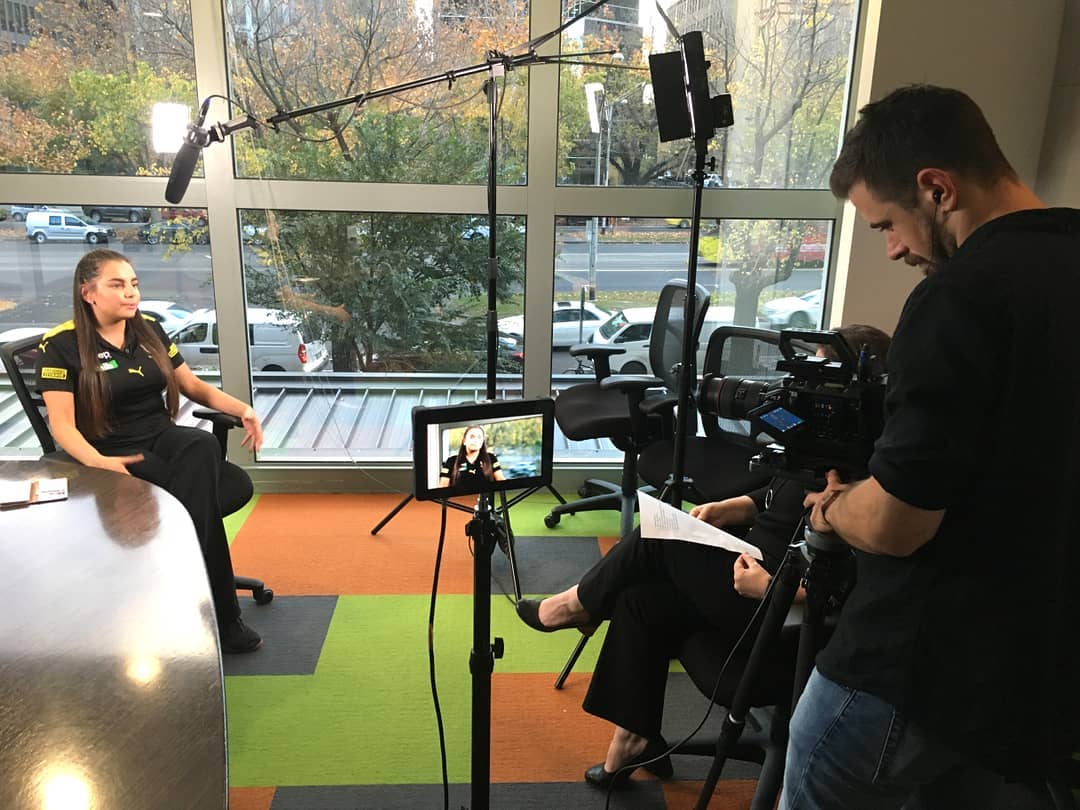4 Pitfalls to Avoid When Delivering Your Video Production Strategy
From start-ups to long-standing multinational conglomerates, more and more businesses across every sector are wising up to the effectiveness of a video production marketing strategy comprising well-produced content to tell their stories, and make meaningful connections with new and existing customers.
There are lots of elements that go into the creation of a video that achieves all of the above, from pre-production and planning, through to the shoot itself, and the editing process that brings everything together into a polished, attention-grabbing finished product.
There are a number of approaches to telling a story in video form. You might stick with a single technique throughout, or you might mix it up by blending various storytelling methods in one film.
One common and highly effective technique that can be utilised to tell a company or brand’s story is the tried-and-tested interview, an approach that all of us are no doubt familiar with.
Whether it’s the big boss talking about the overall vision for the business, an external academic to add credibility to your claims, or a celebrity ambassador to inject a bit of fun and familiarity, interviews are an engaging means of telling your audience exactly what you need them to know.
However, businesses that are less experienced in the art of video production can make the mistake of neglecting to give due time and attention to the contents of the interview. It’s certainly not as straightforward as simply sitting your chosen spokesperson in front of a camera and letting them ad lib, even if they do happen to know everything there is to know about your company.
Delivering a good interview response is a skill in itself, and you’ll want to be confident that your speaker will make an impression and sell the story, with polished answers that perfectly encapsulate who you are and what you do and, most importantly, prompt the desired response from the audience.
We’ve put together a list of four mistakes that are easy to make when managing the interview aspect of a corporate video, so you don’t fall into these common traps …

1. Don’t give too much information
We’ve all heard the expression ‘TMI’, and this principle is just as relevant in video production as in any other method of communication.
If your selected spokesperson comes from within your organisation, the likelihood is they will know the business inside out, and back to front. There is also a good chance they will be incredibly passionate. On the one hand, this is fantastic! Deep knowledge and genuine passion makes for an authentic interview, with viewers likely to fully believe what they are being told.
However, being so close to the operations of your business can be a double-edged sword in an interview situation. Somebody who lives and breathes your business 24/7 will actually need to work harder to reach an objective stance on what the viewer wants or needs to know. The temptation might be to reel off an abundance of information in minute detail, and while this may all be fascinating and crucial to you and your team, your audience might not feel the same way.
An external perspective is incredibly valuable in helping you decide on the most appropriate information to include as part of your interview, and to differentiate what you think is the most interesting information from what people outside your business will find interesting.
A video production company or external video content marketing agency has the advantage of providing a fresh set of eyes and ears. Bouncing ideas off them prior to the interview taking place is a great idea. This will help you identify the key messages necessary to truly engage your customers. You could even go a step further and run your ideas past somebody from your social circle!
In addition, you may be tempted to fall back on industry jargon or technical speak, and in doing so will run the risk of leaving the viewer confused about what you’re telling them. Make sure you don’t overcomplicate your script. Simplify complex language wherever possible, and present technical information in a way that’s accessible to the average person on the street.
2. Avoid covering too many topics in a single video
Setting up a video shoot carries various expenses in terms of time, resources and money. So it makes sense that you’ll want to maximise the opportunity once the groundwork has been laid and everything is in place. The set-up is there, so why not cover as many different facets of your brand story as possible? After all, once your interviewee is in-situ you won’t incur any additional costs by having them give lengthier responses, or more of them.
However, filming surplus content should not be done with the intention of cramming everything into one long and convoluted video. You should be striving for clean, concise, to-the-point videos that will engage viewers and hold their attention from beginning to end.
This can be achieved in a couple of different ways. The first option would be to plan out several separate videos in advance, each with their own distinct purpose and message, but all shot in the one sitting. Alternatively, you could shoot everything you think you might need, and use the editing process as an opportunity to cherry-pick the best bits to create a series of independent, digestible videos each with a focus on a particular concept or topic.

3. Don’t crowd the video with too many faces
Creating a video is an exciting process, particularly if it’s out-of-the-ordinary for your business and team.
You’re passionate about your company, and no doubt you’re passionate about your people too. You obviously want to make sure they feel included in all facets of your operations. There is a temptation, therefore, to find opportunities for as many of your team as possible to be featured. And while this might be good for morale, from the perspective of creating an effective piece of video content, it’s much wiser to have a single or very small handful of expert interview-ees with the appropriate levels of knowledge, credibility, passion and charisma.
Viewers tend to respond best to individual figures who present as leaders. You want to build an emotional connection between viewer and interviewee, as well as a level of trust. This is very difficult to achieve if the camera is flitting between twenty different employees within a short two-and-a-half minute piece!
What this essentially means is that you need to make a firm decision about who is going to be the ‘face’ of your video. As alluded to above, you’ll want to choose somebody with a bit of flair, who presents well, and is visibly passionate about what they are sharing with the audience … and that might not necessarily be the person with the most in-depth knowledge!
Keep in mind that once you’ve chosen the ‘star of the show’, you can always keep team members with superior knowledge close at hand throughout the shoot, in order to provide input and prompters whenever needed.
4. Keep your audience top-of-mind
Fundamentally you’re not making your video for yourself, and nobody else is going to watch it unless they feel there’s something in it for them. That’s why it’s so important to place the audience’s needs and expectations at the forefront of every decision you make around the content.
Crucially, through watching your video the viewer needs to come away with an understanding of how your business is going to improve their life, from a professional or personal perspective.
When considering the content of your interview, therefore, don’t focus on what you love the most about your product or service. Instead tell the audience why they should love it, and why they simply can’t live without it!
To inform the messaging of your interview, it’s a good idea to consult your entire team. Bounce some ideas around when it comes to how best to talk to your customers, what they are most likely to have an emotional response to, and what real-world examples might resonate and help paint a picture of the benefits. You could also consult with current happy customers and find out why they love your offering so much. No doubt those same reasons will resonate with potential new customers too!
Once you’ve nailed your messaging and you’re ready to deliver it, imagine you’re talking directly to a prospective client throughout the interview. Think about the demeanor, energy and expressions that you’d use if you were talking to them face-to-face. This will add a level of authenticity to your interview and help ensure that all important customer buy-in.

A final thought on your video production strategy…
Always be mindful that your overall objective for telling your brand story in video form is to make an authentic case around why potential customers should give you their time to watch, and then take the action you want them to take. Done right, it’s an opportunity to humanise your business by putting a friendly, authoritative, trustworthy face to it, and making a genuine connection.
Fundamentally, heeding the advice above and avoiding these common pitfalls will set you on the right path to tell a story your customers want (and quite possibly need!) to hear.
To talk in more depth about interviews or any other element of video production, the team at WeMOV loves a chat!
We are a highly creative group of passionate and skilful video gurus, who spend every day creating impactful content that tells the right stories, to the right people, in the right ways. For the best advice on video production Melbourne has to offer, give us a call today.
What’s more, we walk the walk and talk the talk, having created thousands of highly successful scripted videos for clients looking for effective ways to promote their business, product, project or event! Check out our showreel to see for yourself!


